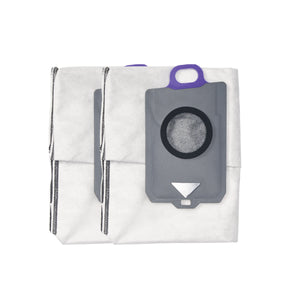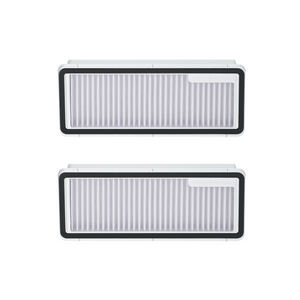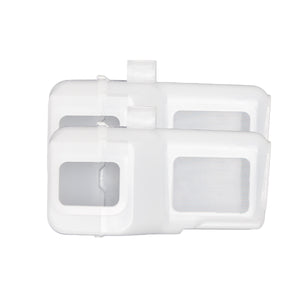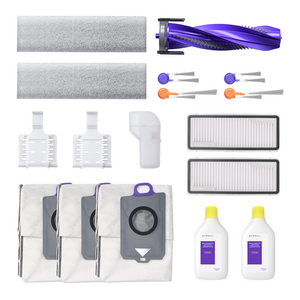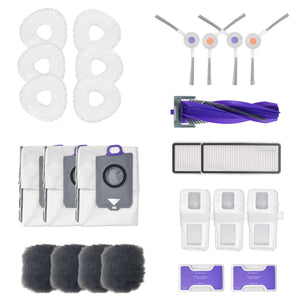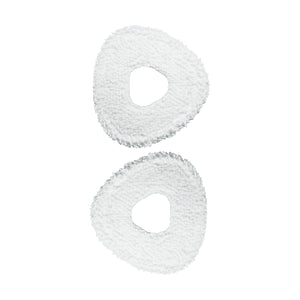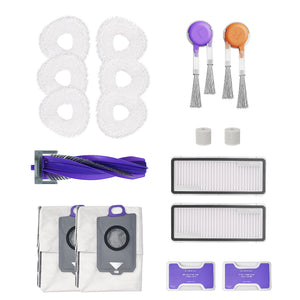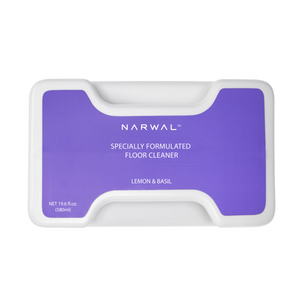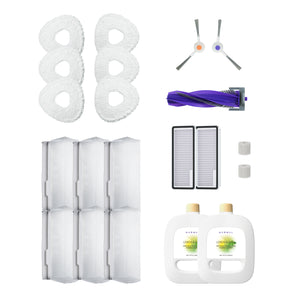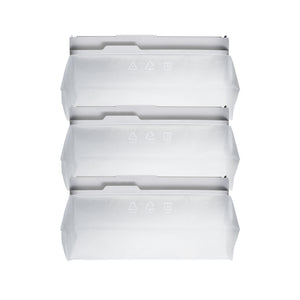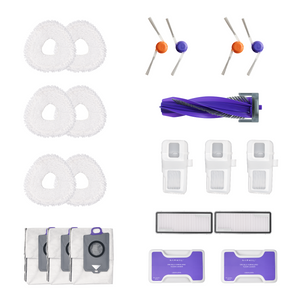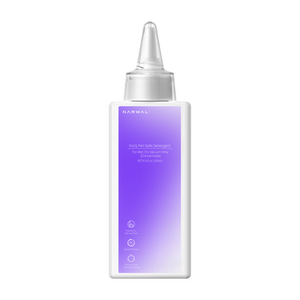Keeping your home clean while balancing a busy schedule can be tough, especially if you only have time to clean at night. With advances in robot vacuum technology, it’s now possible to rely on your device to keep your home spotless even in low light. But can robot vacuum cleaners truly work well at night? And if so, what makes them effective in the dark?
In this blog, we’ll explore the features that enable night cleaning, the challenges faced by robot vacuums in low light, and why Narwal models stand out for nighttime performance.
Can Robot Vacuums See in the Dark? Here's How It Works
Yes—they can, but only if they use the right technology. Most advanced robot vacuums today are equipped with sensors that allow them to navigate without relying on ambient light. Here's how they do it:
1. LiDAR (Laser-Based Mapping)
LiDAR stands for Light Detection and Ranging. It works by shooting out invisible laser pulses in all directions to scan the room, measuring distances between the robot and surrounding objects. This allows the vacuum to build a highly accurate 360° map of the space—even in complete darkness. Narwal’s high-end models use LiDAR as their primary mapping system, ensuring reliable navigation at night.
2. Infrared Sensors
Infrared sensors emit a different type of invisible light, which bounces off nearby objects. These sensors detect those reflections and calculate distance—helping the robot avoid furniture, walls, and obstacles, even with no visible light in the room.
3. AI + Sensor Fusion
Narwal combines both LiDAR and infrared technology with AI algorithms to interpret the environment in real time. The vacuum adapts to room layouts, avoids obstacles like cords or shoes, and recalculates paths dynamically during each cleaning session.
4. Why Cameras Fall Short in the Dark
Some robot vacuums rely on camera-based navigation, which works well in daylight but fails in dark rooms. Unlike LiDAR or infrared, cameras need light to “see.” That’s why camera-only models can struggle or stop entirely when operating at night.
Narwal’s high-end models combine LiDAR and infrared sensors with AI-powered object detection, allowing the robot to detect over 100 types of obstacles and adapt to real-time changes in layout—even at night.
Challenges of Night Cleaning
Even with advanced technology, robot vacuums face unique challenges when cleaning in low light. Understanding these challenges can help you choose a model designed to handle nighttime cleaning effectively.
Dark Floors and Cliff Sensors
One common issue is that dark-colored floors can confuse cliff sensors. Some sensors detect dark surfaces as edges, mistaking them for stairs or drop-offs. This confusion causes the vacuum to stop and change direction, leaving parts of the floor uncleaned.
Narwal’s advanced models are calibrated to differentiate between actual edges and dark surfaces, ensuring comprehensive coverage even on darker floors.
Obstacles and Small Objects
Night cleaning can also make it harder for vacuums to detect small obstacles on the floor, such as pet toys or loose cables. While most sensors can recognize larger items, small objects may be missed, especially in dim light. AI and infrared sensors in Narwal vacuums help minimize this issue by actively scanning for various objects and adjusting the cleaning path accordingly.
Noise and Battery Consumption
Quiet operation is essential when a robot vacuum works at night. The last thing you want is a loud machine disturbing your family’s sleep. Narwal models are designed to run quietly, thanks to efficient motors and noise-reduction technology.
Battery life is another important consideration for nighttime cleaning, as some models may consume more power while using sensors in low light. Narwal’s extended battery life ensures that even large spaces can be cleaned in a single run without the need for frequent recharging.
Tailored Sensor Performance in Low Light Conditions
Narwal vacuums achieve superior performance in low light due to the combination of LiDAR, infrared sensors, and AI-driven adaptability. Here’s how these technologies come together to enhance nighttime cleaning:
-
Enhanced Mapping with LiDAR and Infrared: LiDAR and infrared sensors work in tandem to create real-time maps of the room and detect obstacles. This dual-sensor system, combined with AI, provides Narwal vacuums with a comprehensive understanding of their surroundings, allowing them to operate effectively in dark environments without relying on external lighting.
-
Low-Light Obstacle Avoidance: Unlike camera-based navigation systems, which often struggle in dim light, Narwal vacuums excel in low-light settings. The sensor-based navigation allows them to navigate seamlessly around dark furniture, pet toys, and other obstacles, ensuring every corner is cleaned, regardless of the lighting conditions.
This specialized performance makes Narwal vacuums an excellent choice for homeowners who need reliable nighttime cleaning, adapting smoothly to changes in light levels and ensuring efficient coverage throughout the cleaning cycle.
Narwal Freo Z Ultra: Exceptional Night time Cleaning Capabilities
The Narwal Freo Z Ultra is specifically designed to perform efficiently in low-light or dark environments, making it an ideal choice for nighttime cleaning. Here’s how its advanced features support quiet, precise, and effective cleaning at night.
[cta:narwal-freo-z-ultra-robot-vacuum-mop]
1. TwinAI Dodge Obstacle Avoidance for Night Navigation
The Freo Z Ultra’s TwinAI Dodge technology uses dual 136° ultra-wide-angle RGB cameras to provide high-precision obstacle detection, even in complete darkness. This technology allows the vacuum to create a real-time 3D map of the room, accurately detecting and navigating around obstacles like furniture, pet toys, and cords with millimeter-level accuracy.
-
3D Mapping for Enhanced Night Vision: The dual cameras capture detailed images to create a 3D layout, allowing the vacuum to navigate dark rooms effectively without missing areas.
-
Edge-to-Edge Cleaning: With its close-edge cleaning capability, the Freo Z Ultra reaches within 1 cm of walls and furniture edges, ensuring comprehensive coverage in low light, where missed edges might otherwise go unnoticed.
2. AI DirtSense™ for Targeted Night Cleaning
The Freo Z Ultra’s AI DirtSense™ 2.0 technology optimizes cleaning based on detected dirt levels, making it highly effective for nighttime use. This feature identifies different types of dirt, adjusting suction and mopping pressure to provide thorough, quiet cleaning.
-
Automatic Power Adjustment: For heavy dirt, the vacuum increases suction to 12,000 Pa, while lighter messes are cleaned more quietly, minimizing noise. This keeps night cleaning efficient and unobtrusive.
-
Real-Time Cleaning Adjustments: By switching modes between vacuuming and mopping, DirtSense™ ensures efficient, focused cleaning, reducing unnecessary noise and energy use at night.
The true strength of the Freo Z Ultra at night isn't just about running quietly—it’s about navigating confidently. With advanced LiDAR and infrared sensors, it operates independently in dark rooms, detecting obstacles and adjusting its path in real time to avoid collisions and missed spots.
It also runs quietly enough not to disturb your routine while cleaning at night. For users who prioritize low-noise performance, we’ve created a guide to the quietest robot vacuums to help you compare models based on sound level and design.
5. AI-Adaptive Hot Water Mop Washing and Drying
To maintain optimal mop performance for night cleaning, the Freo Z Ultra’s AI-adaptive hot water washing and drying system keeps the mop clean and hygienic, even in overnight cycles.
-
Temperature-Controlled Mop Cleaning: The mop is automatically washed at optimal temperatures between 45°C and 75°C, ensuring thorough sanitation without manual intervention, ideal for homes that prefer daily night cleaning routines.
The Narwal Freo Z Ultra’s combination of advanced sensor technology, AI-driven navigation, and ultra-quiet operation makes it an exceptional choice for nighttime cleaning, ensuring effective, quiet, and maintenance-free operation even in complete darkness.
Best Practices for Using Robot Vacuums at Night
If you want to optimize your robot vacuum’s performance at night, a few simple practices can help make the process smoother.
Provide Some Ambient Light
A night light or LED candle can make a difference in difficult spots or rooms with lots of obstacles. This little extra light can help the sensors detect smaller objects and edges, making navigation even more precise.
Keep the Cleaning Area Clear
To reduce the chances of your vacuum getting stuck, clear the floor of any small items. Move pet toys, shoes, and cables out of the vacuum’s path. The fewer obstacles, the more efficiently your robot can complete its cleaning task. This also reduces the strain on sensors, making it easier for them to detect essential objects and avoid collisions.
Regularly Clean the Sensors
Dirty sensors can affect performance, especially in low light. Dust or pet hair covering the sensors can interfere with obstacle detection and navigation. Regularly wipe down the sensors with a soft cloth to ensure that they function properly. Narwal vacuums are designed to be low-maintenance, but occasional sensor cleaning can go a long way in keeping them at their best.
Conclusion
Robot vacuums have come a long way in adapting to low-light cleaning needs. With the right technology, they can now clean effectively in the dark without human intervention. Narwal models excel in this area, thanks to their use of LiDAR, infrared sensors, and AI-driven navigation.
Whether you have a large home or a small apartment, Narwal offers a model that can handle night cleaning with ease. Consider your home’s layout, flooring, and specific cleaning needs to choose the perfect model for nighttime use.
FAQs
Can robot vacuums clean in complete darkness?
Yes. Advanced models that use LiDAR or infrared sensors—like the Narwal Freo Z Ultra—can navigate and clean in total darkness without relying on visible light.
Do robot vacuums need light to operate?
It depends on the technology. Camera-based vacuums need ambient light to “see,” while LiDAR- and infrared-based robots generate their own signals, making them fully functional even at night.
What’s the best robot vacuum for dark rooms?
The Narwal Freo Z Ultra stands out as the top choice for dark environments, thanks to its LiDAR mapping, real-time obstacle detection, and adaptive AI path planning. It's designed to clean precisely—even in pitch-black spaces—without missing spots or bumping into objects.
What should I consider when choosing a robot vacuum for night cleaning?
For effective night cleaning, look for vacuums with low-noise operation, reliable obstacle detection (such as infrared or LiDAR sensors), and a long battery life. These features ensure quiet and efficient cleaning in low-light conditions, minimizing disturbances to the household.
Do Narwal vacuums work well on dark floors at night?
Yes, Narwal vacuums are calibrated to recognize dark floors without mistaking them for edges or drop-offs. Their advanced sensors differentiate between dark flooring and actual cliffs, allowing them to clean comprehensively on any surface color.
Does a robot vacuum use more battery power when cleaning in the dark?
No. Typically, cleaning in the dark doesn’t require extra battery power if the vacuum relies on LiDAR or infrared sensors, as they function independently of light. However, some models with additional LED lights or higher sensitivity settings for dark environments may consume slightly more power.



















